AVOID These 5 “Healthy” Foods If You Suffer from Painful Gout Attacks (Uric Acid Alert!)
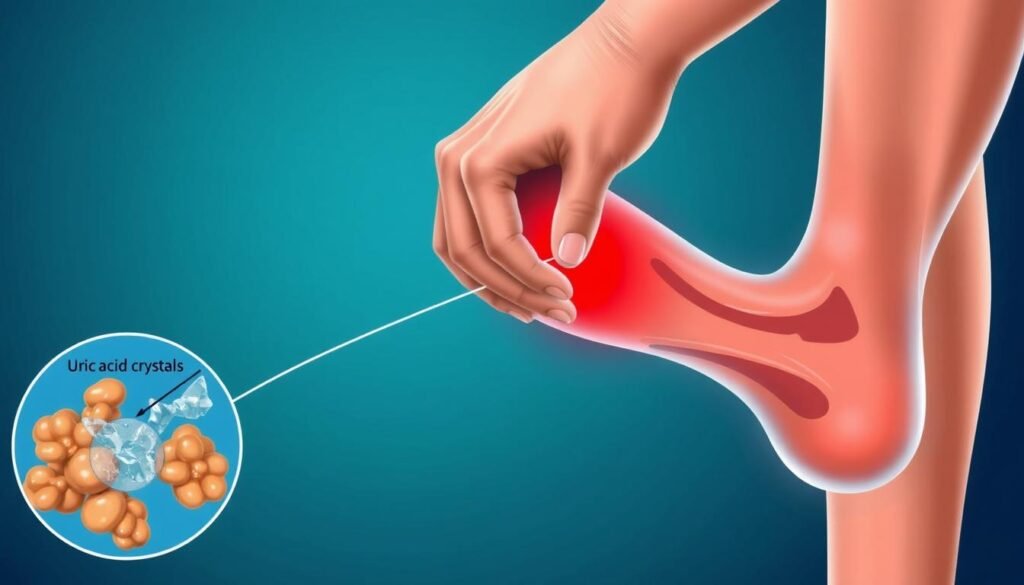
If you’re battling gout, you’ve probably been told to cut back on red meat and alcohol. But what if some of the “healthy” foods in your diet are actually triggering those agonizing flare-ups? Gout isn’t just affecting older adults anymore – we’re seeing more cases in people as young as 35. The painful truth is that gout is fundamentally a metabolic issue, not just a result of indulging in steak dinners.
While most people focus on avoiding obvious triggers like red meat, they’re often unaware that certain foods marketed as “healthy choices” could be silently raising their uric acid levels. Let’s uncover these hidden culprits and learn how to manage gout more effectively.
Understanding Gout: Beyond the Meat Myth
Gout occurs when excess uric acid in your bloodstream forms sharp crystal deposits in your joints. These crystals trigger intense inflammation, swelling, and the excruciating pain that characterizes a gout attack. While red meat and alcohol are well-known triggers, they’re not the only culprits.
Your body produces uric acid naturally when it breaks down purines – compounds found in many foods. When your metabolism can’t process uric acid efficiently, or when you consume too many purine-rich foods, uric acid levels rise and crystals can form.
This metabolic issue explains why some people experience gout despite following what they believe is a healthy diet. Let’s explore five seemingly nutritious foods that could be sabotaging your efforts to manage gout.
The 5 “Healthy” Foods to AVOID or Limit for Gout
These foods might surprise you – they’re often recommended as part of a healthy diet, but for gout sufferers, they can spell trouble. Understanding why these foods raise uric acid levels can help you make better choices.
1. Fruit Juice (Even Orange Juice)
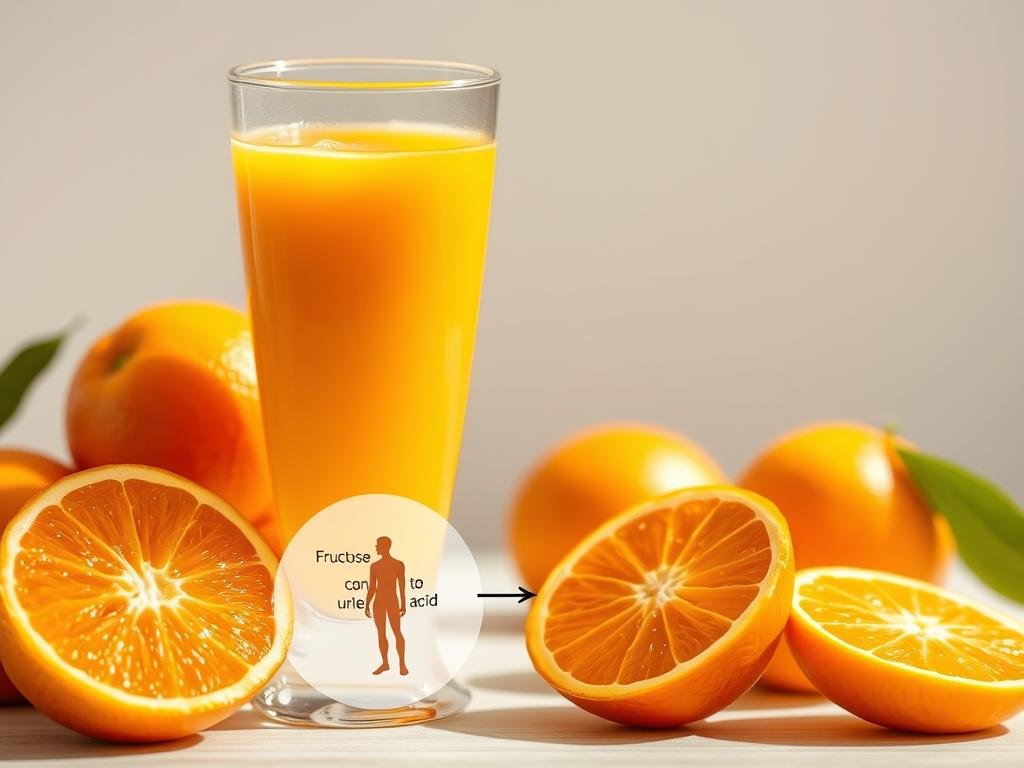
That morning glass of orange juice seems like a healthy choice, but it could be triggering your gout attacks. Fruit juices, especially store-bought varieties, contain concentrated fructose without the fiber of whole fruits.
When your body metabolizes fructose, it produces uric acid as a byproduct. Studies show that high fructose consumption can raise uric acid levels even more than some sodas. The problem is especially pronounced with bottled or boxed juices, which often contain added sugars or high fructose corn syrup.
Better Alternative: Choose whole fruits in moderation instead of juice. If you must have juice, opt for freshly squeezed and dilute it with water to reduce the fructose concentration.
2. Soy Milk and Tofu
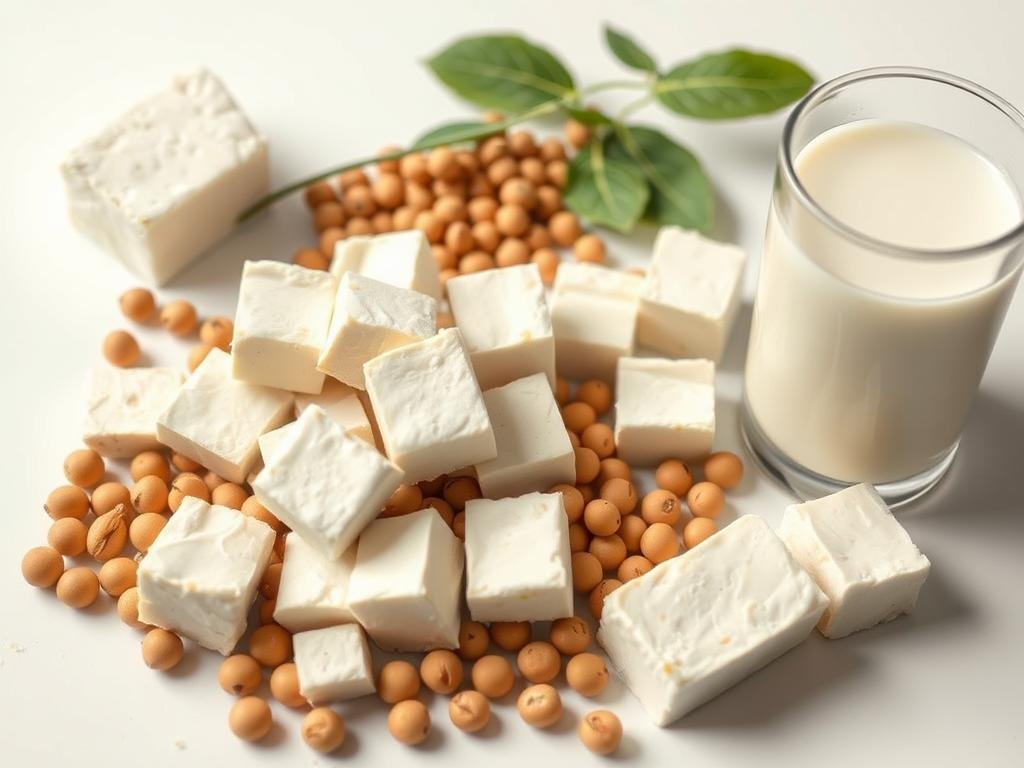
Plant-based diets are often recommended for health, but some soy products contain moderate levels of purines. While not as high as organ meats or shellfish, daily consumption of soy milk, tofu, and other soy products can contribute to elevated uric acid levels in sensitive individuals.
This doesn’t mean you need to eliminate these nutritious foods entirely. However, if you’re consuming soy products daily as part of a vegetarian or vegan diet, you might want to monitor your intake and observe how your body responds.
Better Alternative: Rotate your protein sources rather than relying heavily on soy. Try almond milk instead of soy milk, and incorporate other plant proteins like beans and lentils in moderation.
3. Wholegrain Cereals and Oats
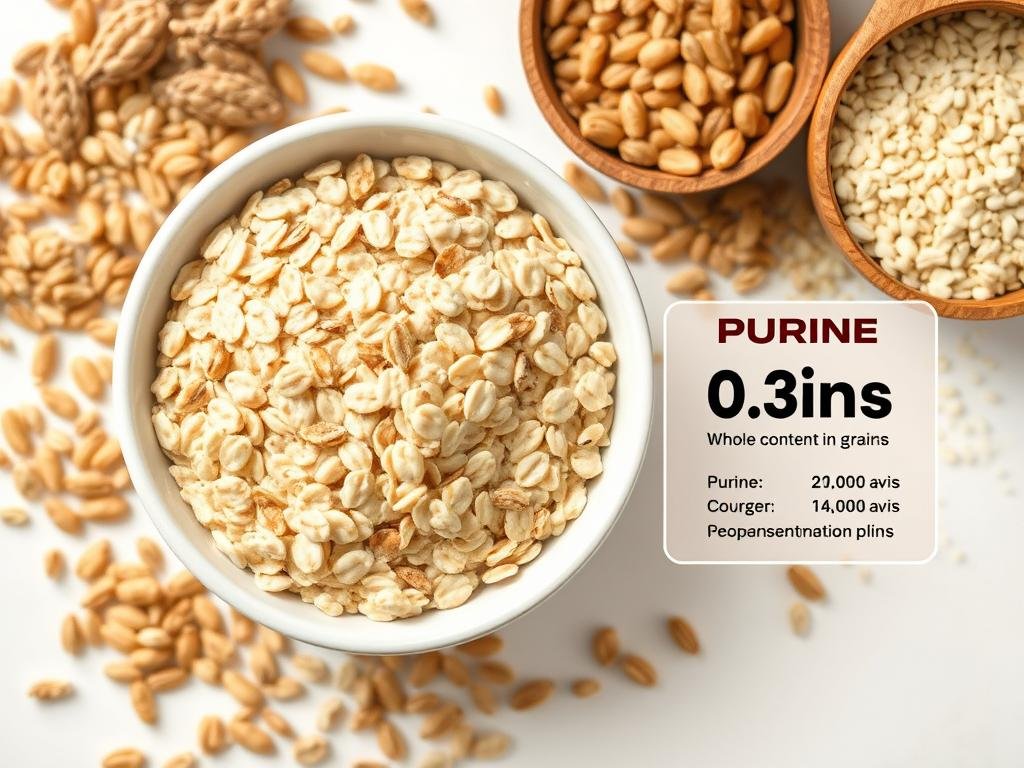
Whole grains form the foundation of many healthy eating plans, but they contain purines that can affect gout sufferers. Oats, in particular, have a higher purine content than many other grains and can potentially contribute to increased uric acid levels.
This doesn’t mean whole grains are “bad” – they provide essential nutrients and fiber. However, large portions or daily consumption might contribute to gout flare-ups in sensitive individuals.
Better Alternative: Enjoy whole grains in moderation and vary your choices. Rice and quinoa tend to have lower purine levels than oats. Watch your portion sizes and balance with other low-purine foods.
Free Gout Relief Guide
Discover how to naturally lower your uric acid levels, prevent painful flare-ups, and enjoy your favorite foods again with our comprehensive guide to gout management.
4. Cauliflower and Spinach
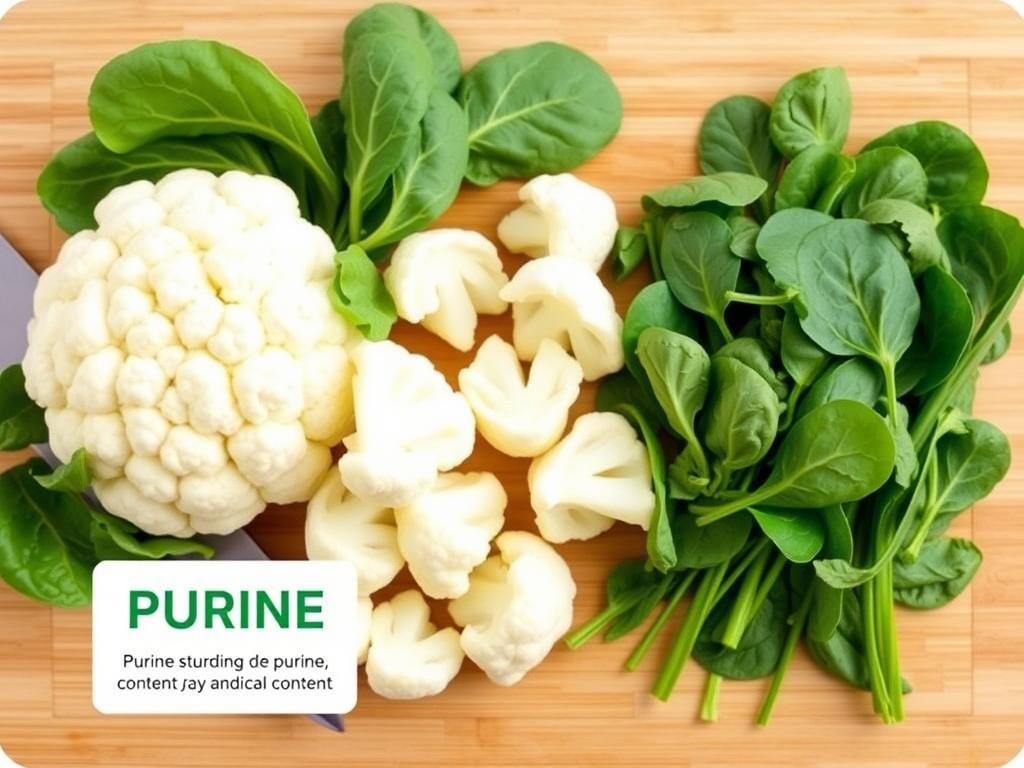
Vegetables are generally recommended for gout sufferers, but certain vegetables contain surprisingly high levels of purines. Cauliflower, spinach, and asparagus fall into this category, with purine levels higher than many other vegetables.
This doesn’t mean you should avoid these nutritious vegetables completely. The body processes plant-based purines differently than animal purines, and the overall health benefits of these vegetables are significant.
Better Alternative: Enjoy these vegetables in moderation rather than large “buffet-style” portions. Balance your meals with lower-purine vegetables like carrots, cucumbers, and bell peppers.
5. Alcohol-Free Beer
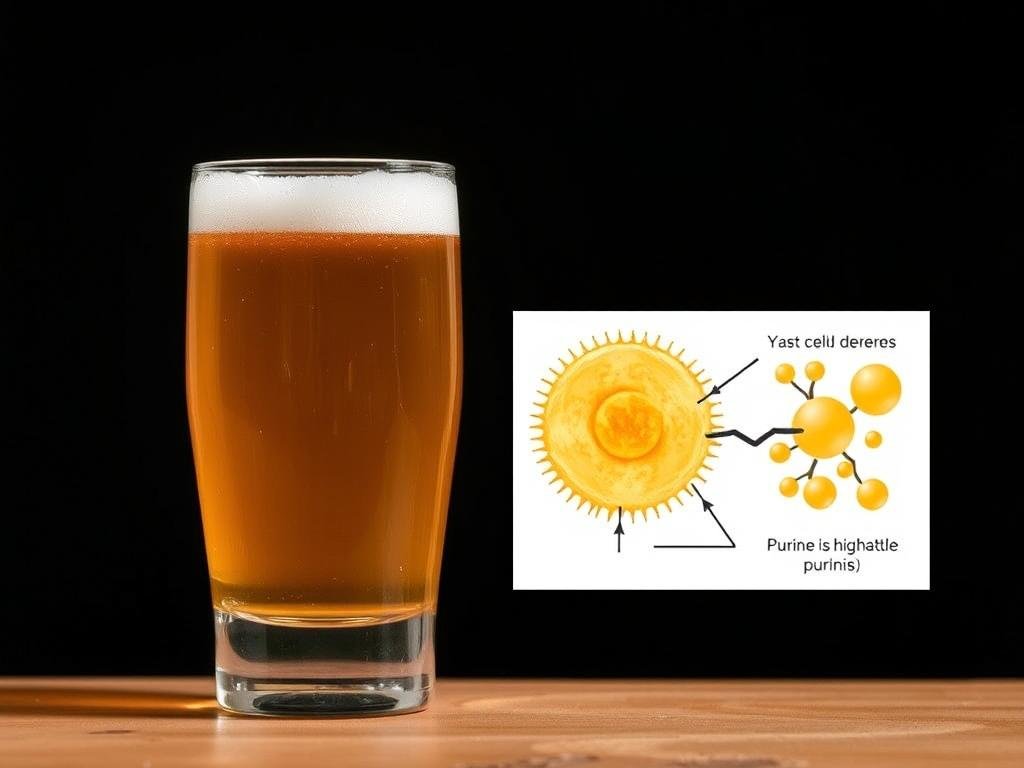
Many gout sufferers switch to alcohol-free beer thinking it’s a safer alternative. Unfortunately, while it lacks alcohol, non-alcoholic beer still contains brewer’s yeast – a significant source of purines.
The yeast content in beer (both alcoholic and non-alcoholic) contributes to its high purine levels. This means that even alcohol-free options can potentially trigger gout attacks in sensitive individuals.
Better Alternative: Choose other non-alcoholic beverages like water, tea, or coffee. If you enjoy the taste of beer, look for specially filtered options that remove yeast proteins.
Simple Steps to Help Flush Out Uric Acid Naturally

While avoiding trigger foods is important, actively helping your body eliminate uric acid can make a significant difference in managing gout. Here are some simple yet effective strategies:
Gout: A Metabolic Issue, Not Just a Dietary One
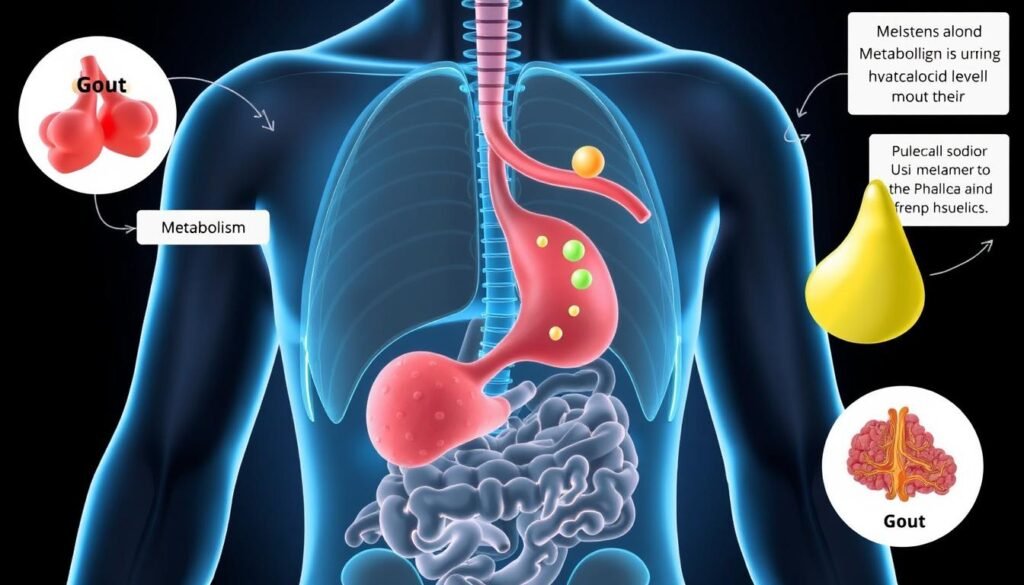
While diet plays a crucial role in managing gout, it’s important to understand that gout is fundamentally a metabolic condition. Your body’s ability to process and eliminate uric acid depends on various metabolic factors, not just what you eat.
Improving your overall metabolic health through regular physical activity, proper hydration, adequate sleep, and stress management can significantly impact how your body handles uric acid. These lifestyle factors work together with dietary changes to reduce the frequency and severity of gout attacks.
Remember that individual responses to foods vary. Some people with gout may be more sensitive to certain foods than others. Keeping a food diary can help you identify your personal triggers and develop a customized approach to managing your condition.
Taking Control of Your Gout Through Informed Choices
Managing gout effectively requires looking beyond the common advice to simply avoid red meat and alcohol. By recognizing that seemingly “healthy” foods can also trigger gout attacks, you can make more informed dietary choices.
Remember that moderation is key – you don’t necessarily need to eliminate all these foods completely. Instead, be mindful of your consumption, especially during active flare-ups or if you notice these foods consistently trigger your symptoms.
By combining smart dietary choices with strategies to improve your overall metabolic health, you can reduce the frequency and severity of gout attacks and enjoy a better quality of life.
Stay Updated on Gout Management
Join our newsletter for the latest research, tips, and natural approaches to managing gout and improving metabolic health.
Frequently Asked Questions About Gout and Diet
Can I ever eat these foods again if I have gout?
Yes, most people with gout don’t need to eliminate these foods completely. The key is moderation and understanding your personal triggers. Many find they can enjoy these foods occasionally, especially when their gout is well-controlled. Consider working with a healthcare provider or dietitian to develop a personalized approach.
How quickly can dietary changes affect uric acid levels?
Some people notice improvements within days of making dietary changes, while for others it may take weeks. Uric acid levels typically respond to dietary changes within 1-2 weeks, but the full benefits may take longer as your body adjusts. Consistency is key for long-term management.
Are there any supplements that can help with gout?
Some supplements like cherry extract, vitamin C, and certain herbs have shown promise in helping manage uric acid levels. However, it’s important to consult with a healthcare provider before starting any supplement regimen, as some may interact with medications or have side effects.





